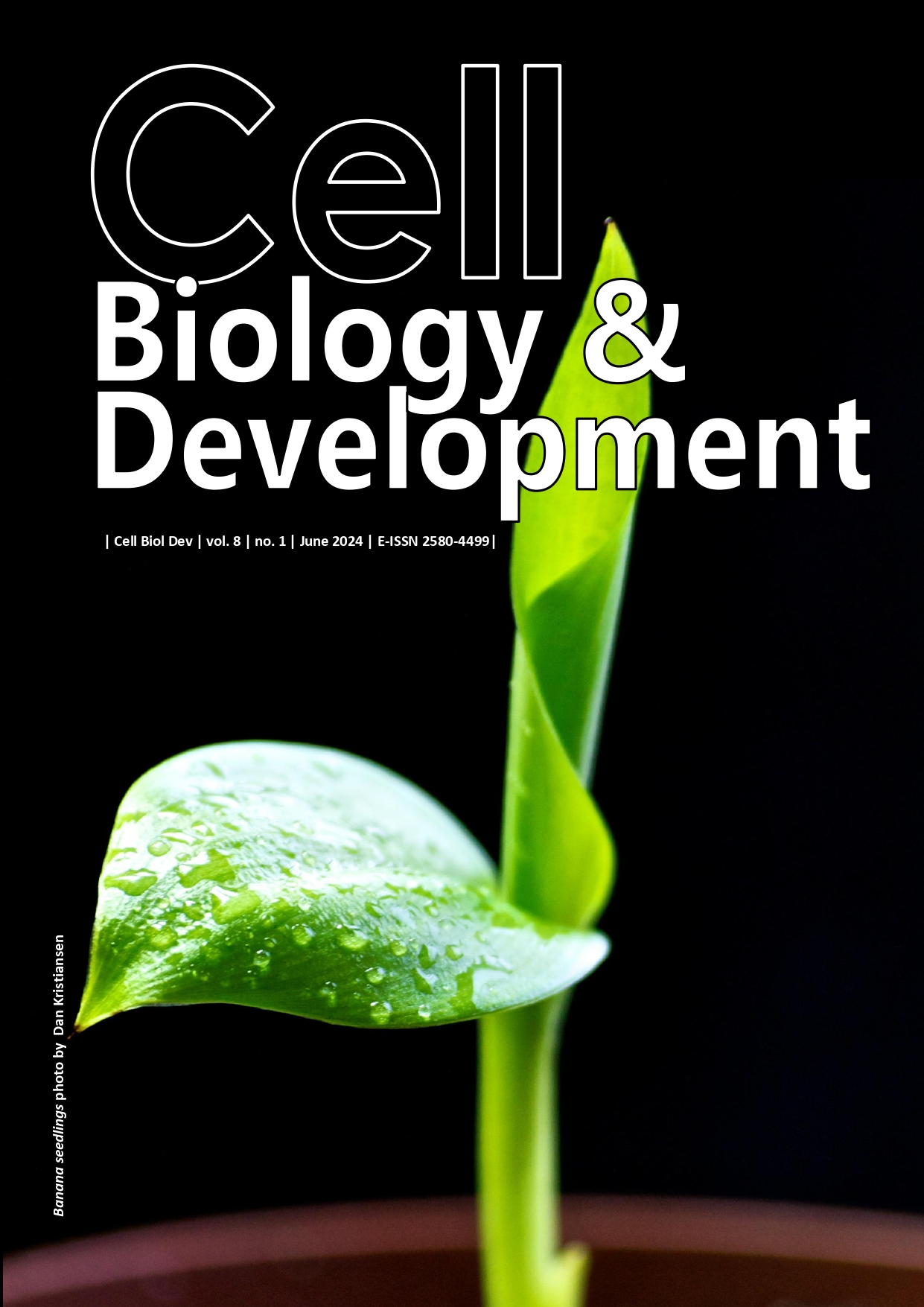Short Communication: Morpho-anatomical and histochemical characterization of four species of Cyperaceae in Rivers State, Nigeria
##plugins.themes.bootstrap3.article.main##
Abstract
Abstract. Ajuru MG, Chinwe-Chikere L, Ibiye A, Elebachi BO. 2024. Short Communication: Morpho-anatomical and histochemical characterization of four species of Cyperaceae in Rivers State, Nigeria. Cell Biol Dev 7: 68-74. This research investigated the morpho-anatomical and histochemical characteristics of four species of Cyperaceae (Kyllinga erecta, Kyllinga bulbosa, Pycreus lanceolatus and Mariscus alternifolius) in Rivers State University. They are perennial, monocotyledonous herbs commonly known as erect greenhead sedge, spikesedge, narrow-leaf flatsedge and umbrella sedge respectively. Hand sectioning method and light microscopy were used for both anatomical and histochemical studies, while meter rule was used for quantitative morphological characters and visual observation was used for qualitative characters. The results for anatomy indicated that epidermal cells are one layered and present in the four species studied, the vascular bundles are all scattered, collateral, conjoint and closed in the stems and are also surrounded by parenchyma cells. The results of histochemical studies showed that there were no calcium oxalate crystals in either the stem or rhizomes of the four species. Results from morphological studies showed that the four species have triangularly shaped stems and are tufted and herbaceous perennial sedges. The four species also have fibrous roots and their leaves are all simple, alternate, glabrous and tristichously arranged. The results also showed that the four species of sedges exhibited a wide range of morphological features that distinguish them from another group of plants, and the characters showed some level of similarities amongst themselves. There were no calcium oxalate crystals in both the stem and rhizomes of all four species studied. Also, the presence of fibrous roots and umbel inflorescence authenticated their classification as monocotyledonous plants. The results of this research would help to improve upon the already existing information about the four species.
2017-01-01

